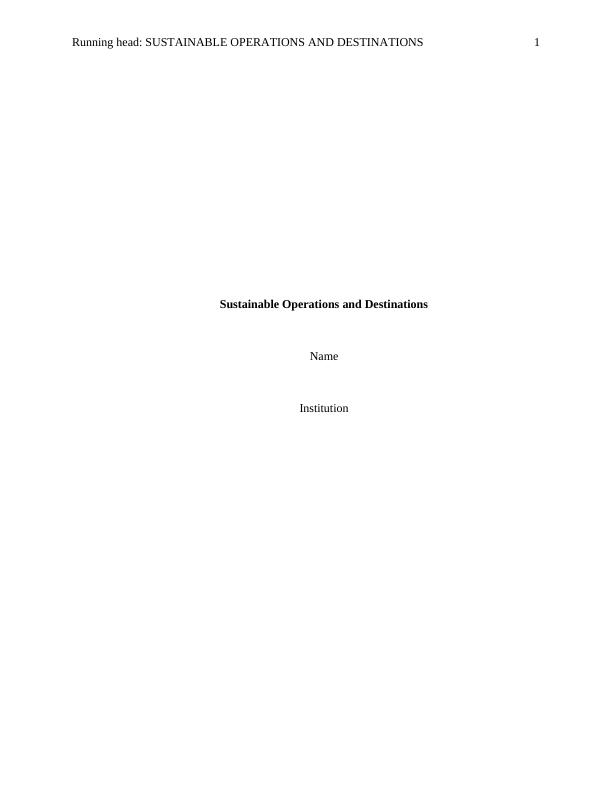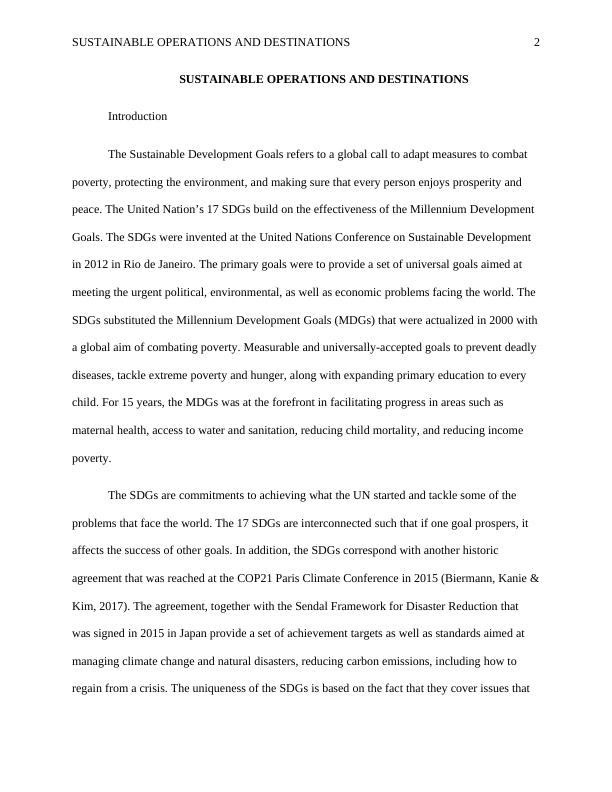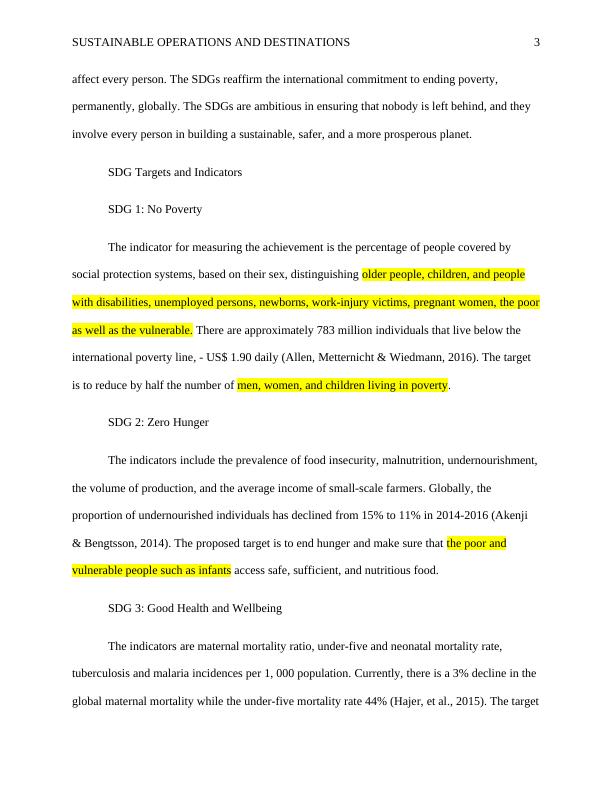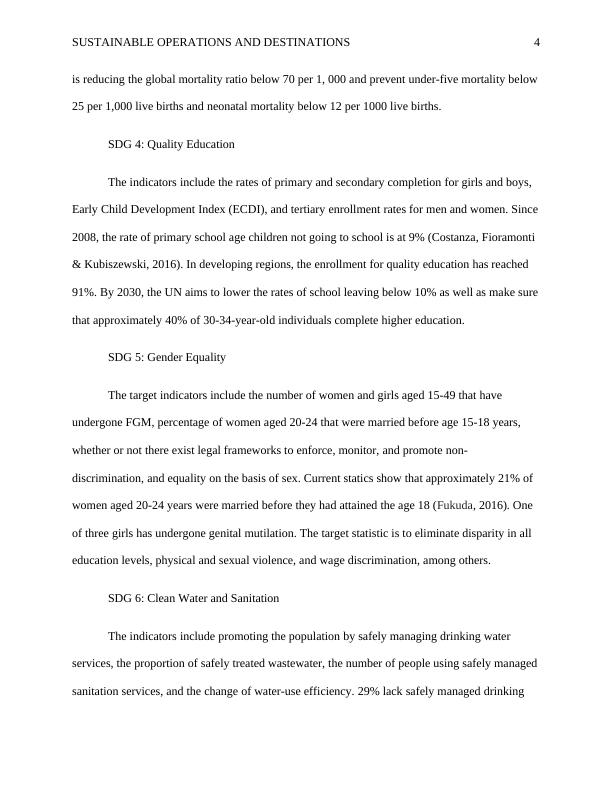Sustainable Operations and Destinations
13 Pages3472 Words74 Views
Added on 2023-01-16
About This Document
This article provides an overview of the Sustainable Development Goals (SDGs) and their targets and indicators. It discusses the interconnectedness of the goals and their relation to other global agreements. The article also highlights the barriers to achieving the SDGs and provides recommendations for sustainable development.
Sustainable Operations and Destinations
Added on 2023-01-16
ShareRelated Documents
End of preview
Want to access all the pages? Upload your documents or become a member.
Role of Forestry Sector in Achieving Sustainable Development Goals
|14
|4961
|488
Economic Development: Indicator, Goals, Institutional Arrangements, Differences, Problems
|8
|1580
|97
Millennium Developmental Goal (MDG)
|9
|2491
|417
Sustainable Development Goals Project 2022
|11
|3017
|13
United Nations endorsed Sustainable Development Goals and global tourism and indigenous cultures
|15
|3966
|222
Introduction to Organizational Behavior
|12
|748
|48




